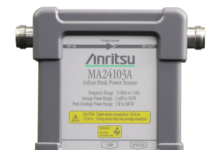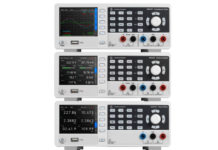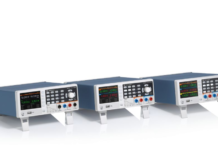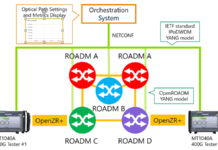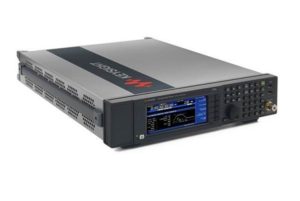
Highlights:
- Generate complex IQ defined modulation on pulsed signals
- Frequency, amplitude and phase switching speed of 170 ns
- Simulate realistic angle-of-arrival and scan-on-scan with agile amplitude range of 120 dB
Keysight Technologies, Inc., introduced an agile vector adapter which extends the capabilities of the UXG X-Series agile signal generators to generate complex pulsed signals and waveforms based on IQ data for more realistic electronic warfare threat simulations. The N5194A UXG X-Series agile vector adapter enables the industry’s highest fidelity agile threat simulations when used with Keysight’s commercial off-the-shelf (COTS), UXG X-Series agile signal generators for aerospace and defense applications.
The N5194A UXG X-Series agile vector adapter operates throughout the 50 MHz to 20 GHz frequency range and includes a 2 Gsample/second digital baseband generation system capable of producing wideband signals with up to 1.6 GHz bandwidth. This makes it possible to generate complex pulsed signals with variable rise and fall times, non-linear chirps, and advanced modulation coding schemes with excellent signal purity, typically -70 dBc in X-band. To mimic antenna scan patterns and angle-of-arrival (AoA) scenarios, the UXG vector adapter includes a built-in solid-state attenuator and provides 120 dB of agile amplitude range. Engineers can add commercial communications signals for even greater realism.
The N5194A vector adapter receives its local oscillator (LO) and reference signals from the N5193A UXG X-Series agile signal generator. This architecture provides several important advantages:
- Agile switching and phase coherence
- Frequency, amplitude and phase switching speed of 170 ns with phase repeatability at all frequencies
- Easy multi-channel and multi-port configurations allow engineers to precisely control the amplitude, phase and time delay of each UXG agile vector adapter output—provides faster evaluation of multi-port direction-finding receivers for accurately simulating the AoA of multiple threat signals
- Easily scale simulation systems as needs change by adding additional UXG agile vector adapters
- Compatible with the U.S. government’s next-generation EW environment generation (NEWEG) system architecture
“Keysight is stepping forward as a commercial collaborator, creating and delivering the rapidly adaptable EW solutions our customers need to succeed far into the future,” said Greg Peters, vice president and general manager of Keysight’s Aerospace and Defense Industry Solutions Group. “We will work with our customers to ensure enhanced realism and greater confidence in test and evaluation to help them take their lab to the next level.”
Engineers can use the N5194A with Keysight’s N7660C Signal Studio software for multi-emitter scenario generation. With Signal Studio’s graphical user interface, engineers can easily set up radar parameters, perform AoA simulations and optimizations. Users can stream multi-emitter scenarios created in Signal Studio directly to the N5194A to reduce programming time. For system testing, users can create and store waveforms in N5194A UXG’s baseband generator memory, and then access them on a pulse-by-pulse basis as pulse descriptor words (PDWs) are streamed to the N5194A.
At only two rack units (2U) high, the N5194A occupies minimal rack space, making it an ideal system component for multi-channel, multi-port AoA threat simulation systems. AoA simulations require precisely calibrated amplitude, time and phase across multiple RF ports. Keysight offers system-level multi-port calibration to the measurement plane of the EW system under test (SUT). For applications that require fully-calibrated threat simulation systems, Keysight’s Aerospace and Defense Custom Solutions group can configure and integrate a solution for specific requirements.
For more information visit: HERE




